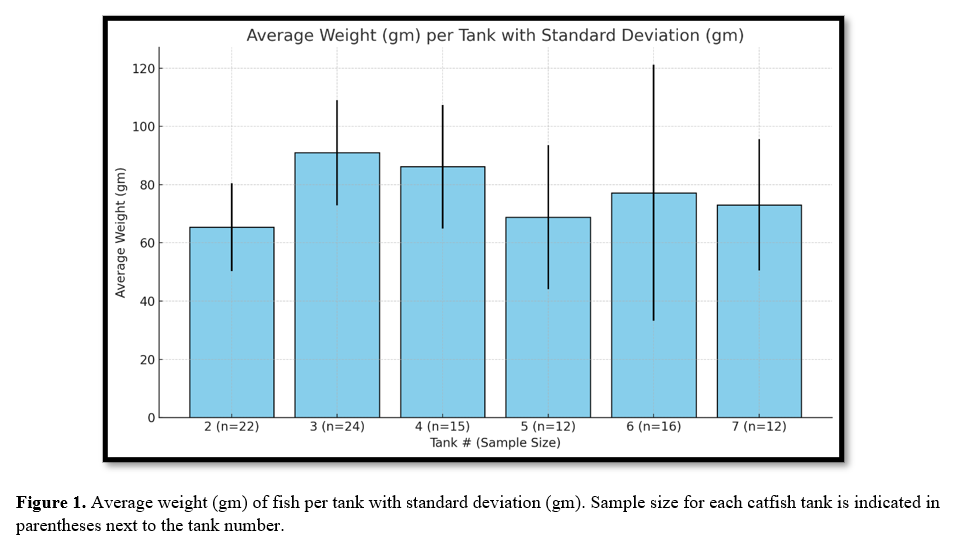EVALUATING NUTRIENT TRANSFER AND PRODUCTIVITY IN A CLOSED-LOOP AQUAPONICS SYSTEM USING CATFISH AND ROMAINE LETTUCE
Introduction
Aquaponics integrates fish farming with soilless plant cultivation (hydroponics) in order to establish a symbiotic system where fish waste provides nutrients for plants, with bacteria facilitating the conversion of ammonia to nitrates. In contrast, hydroponics involves plant growth using nutrient-enriched water. This study aims to compare the growth rates and production of lettuce and fish within an aquaponics system.
Methods
Catfish (Ictalurus punctatus) were raised under controlled conditions, receiving a daily feed of 3% of their body weight, while Romaine lettuce (Lactuca sativa var. longifolia) seedlings were transplanted into a system utilizing reverse osmosis-treated water. Daily monitoring of total dissolved solids (TDS) and electrical conductivity (EC) ensured nutrient optimization. Water samples were tested for ammonia, nitrite, nitrate, pH, and dissolved oxygen using API strips.
Results
Preliminary results from the cat fish showed an average weight of 56.74 ± 15.71gm (Figure 1) . Lettuce growth displayed an average weight of 17.76g ± 9.85gm. These findings suggest that the aquaponic system facilitates effective nutrient transfer from the fish tank, promoting lettuce growth. Future research will compare these results to soil-grown lettuce and pond-grown fish to evaluate which method produces higher growth and yields, providing insights into sustainable agricultural practices for both leafy greens and fish production.
